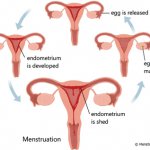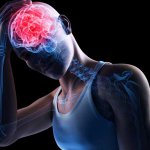How Long Does A Stroke Last
Stroke, also known as ‘cerebrovascular accident’ by the doctors, also means ‘almost an accident’. The existence or the formation of a stroke are usually present for years prior to a first stroke. Of course, the symptoms are very fast. They are evident, affect mildly or adversely, and can aggravate from time to time if proper medications and prevention are not taken. There are in literal terms, hints which help indicates that how long does a stroke last and what precautions must surely be taken. Transient Ischaemic Attacks (TIAs, also known as mini-stroke) is one of the signs which cautions of an upcoming stroke attack. A person experiencing TIA has suffers from symptoms such as trouble to listen, difficulty in speaking because TIA weakens the resistance to function the brain cells. Further signifies deteriorating tendency to move the arms, legs and, eventually, one half of their body!
How long does a stroke last, is a secondary issue, and solely depends on the person’s will and body resistance. On the other hand, TIA’s existing period can be for hours or even minutes but mostly within a day (24 hours).
How long does a stroke last also correlates with its symptoms. Though every individual differs in correspondence to the severity of a stroke, it has a spontaneous effect and is visible within a fraction of seconds. Since the brain handles all parts of a body which functions, the indications are wholly connected to the part of the brain which is affected and its breakage.
The best solution is taking precautions for patients by analyzing and diagnosing the symptoms, immediately after experiencing a TIA, keeping in mind that it can be literally life-saving, also keeping in mind of how long does a stroke last, the most important point to jot down is ‘always remember Face-Arms-Speech-Time’ (also known as FAST). This step (FAST) is the ultimate lifeline, the guide to knowing the arrival of a stroke, and only by acting fast, we can be positively sure of how long does a stroke last. Firstly, observe that the face may slump a little from one side, the affected may not powerless to make contact with any feature (i:e: the eyes, the mouth).
Be on the lookout for the arms of the patient. The stroke-stricken victim may have trouble lifting one or more of their arms because of the deadness. The third point to keep in mind that their speech may be jumbled and inaudible to everybody. If he/she bears these symptoms, then without any hesitation, call the emergency helpline.
9 out of 10 strokes are identified by the ‘FAST’ technique.
The treatment of a stroke is directly proportional to how long the stroke will last. As with all diseases and stroke alike, the sooner the better. Any delay and it will be dire because the worst outcome from a stroke occurs within its first hours. The cure depends on the type of stroke one is experiencing (i:e; hemorrhagic or ischemic) for Ischemic stroke, the treatment lies in restoring blood, whereas for hemorrhagic stroke, the bleeding is controlled in a sophisticated manner.
Within 90, days after their encounter with the TIA, victim can suffer a stroke, which can be cured or become fatal. How long does a stroke last, how will you win the fight, is entirely up to you.






